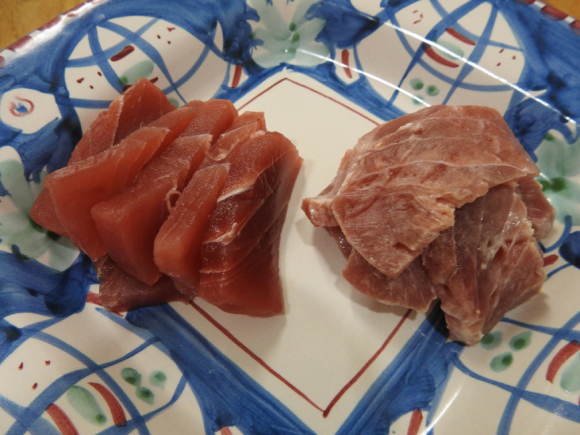
Being one of Japan’s two favorite types of fish to eat raw, Japan takes its tuna pretty seriously. As a matter of fact, tuna sushi and sashimi gets different names depending on which cut of the fish is being served. While just about everyone loves ordinary tuna, either maguro or akami in Japanese, it’s the extra-fatty tuna belly, called chu-toro or o-toro, that people really rave about.
Of course, those same premium cuts that get gourmands’ mouths watering can leave your wallet crying, as the price of the extra-creamy toro can be more than double that of lesser cuts of tuna. That’s why we decided to test a theory we’d heard that you can unlock the full potential of akami with mayonnaise. But does marinating your ordinary tuna in mayo turn it into toro, or is this rumor just a bunch of bull?
With our curiosity piqued and our appetites stimulated, we headed to the grocery store to pick up some akami sashimi and mayonnaise.
▼ See that half-off sticker on the sashimi package? We told you going to the supermarket in Japan late at night is awesome!
This trick isn’t as simple as just dipping your slices of akami into a plate of mayo like it was soy sauce, though. Following the method we’d heard about, first we laid out a large sheet of plastic wrap and slathered it with mayonnaise. Then we wrapped the akami sashimi in it and stuck the bundle in the refrigerator to sit for three hours.
▼ If you can get your hand on some, you might want to use Japanese-style mayonnaise, which is a bit less watery and creamier than Western varieties.
Three hours later, we pulled the package back out of the fridge, unwrapped it, and wiped the excess mayo off of the fish with a paper towel. Our sashimi certainly looked different after its day-spa like mayo wrap, with a paler color much closer to that of toro than the bright red our akami (which literally means “red body”) started out as.
▼ Original akami on the left, post-mayo treatment akami on the right, hungry RocketNews24 staff behind the camera.
Anxious to find out if a similarly dramatic transformation had taken place in the flavor department, we took a bite, and found that if it wasn’t necessarily an exact match, it was definitely toro-like, in both flavor and texture.
Still, when it comes to food, we’re not just cheap, we’re picky too. Even though we’d wiped most of the mayo off before eating, there was still a trace of the condiment left in the slight sogginess it imparted to the sashimi. Oh, and we’re lazy too, so we really wanted to find a way to get around all that wrapping and unwrapping.
Thankfully, we forced ourselves to be industrious just long enough to think of a solution. To test it out, we decided this time to use katsuo (bonito), because it’s even less expensive than akami per kilogram, and it was also half-off at the grocery store.
Instead of bothering with the plastic wrap, we tossed our katsuo sashimi in a mixing bowl and added a little bit of mayo at a time, giving the slices an even coating. Overall, we used less of the condiment than we had with the first method, so we decided to let it marinate for an extra-long time and stuck it in the fridge for five hours rather than three.
This follow-up experiment turned out to be a huge success, with a great flavor and texture. Since we’d already had so much regular sashimi, we decided to make some hand rolls with seaweed, green onions, and sesame seeds. The result tasted so good that we think we might even be able to serve it to guests to our home and tell them it’s chu-toro in order to impress them with our generosity.
As long as we remember to whip up a batch before they come over, that is.
Photos © RocketNews24
[ Read in Japanese ]

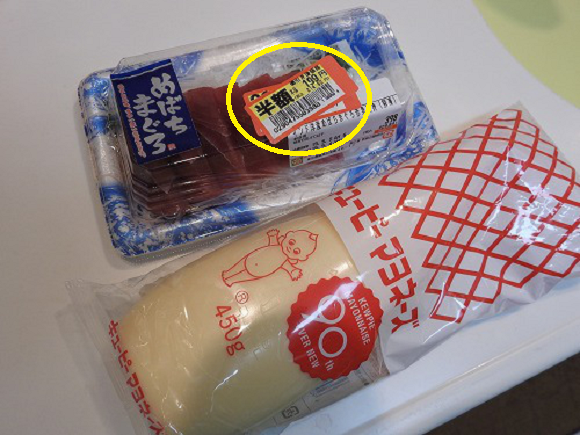

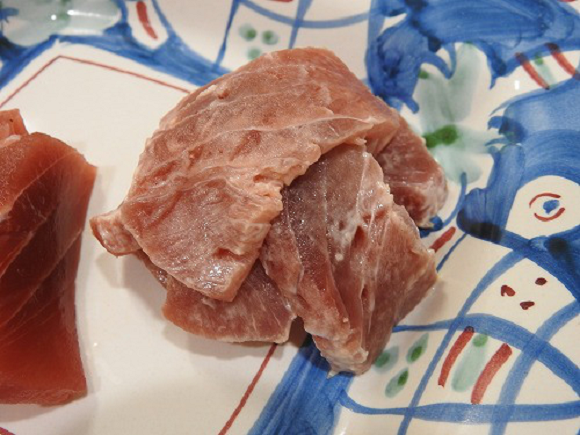
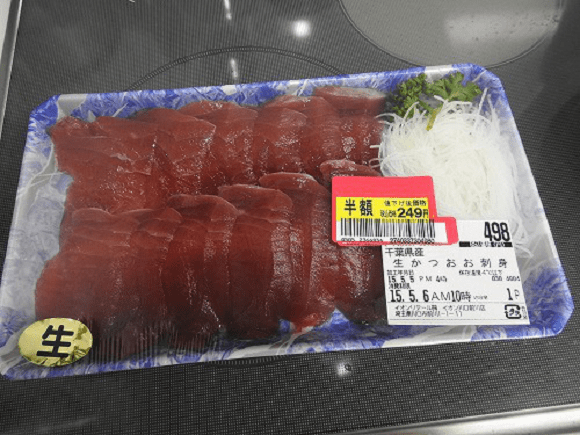
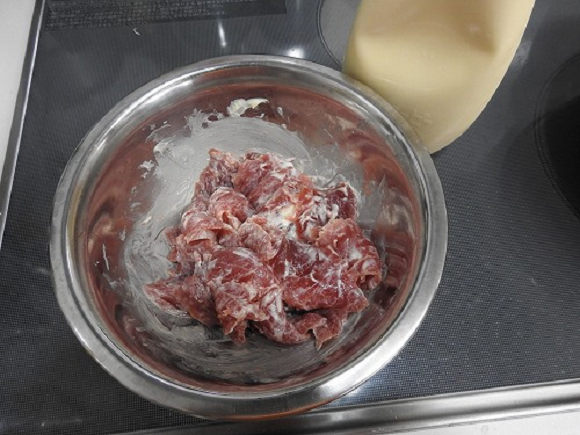
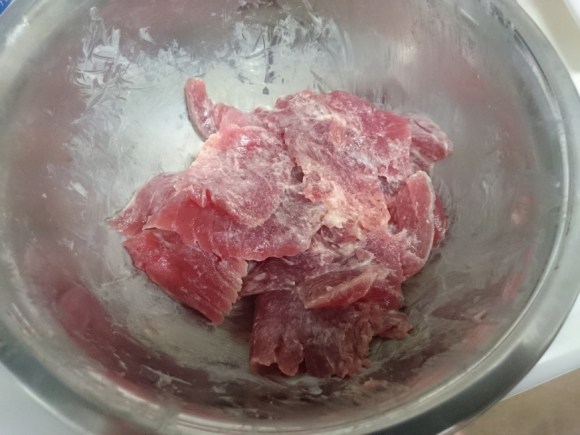
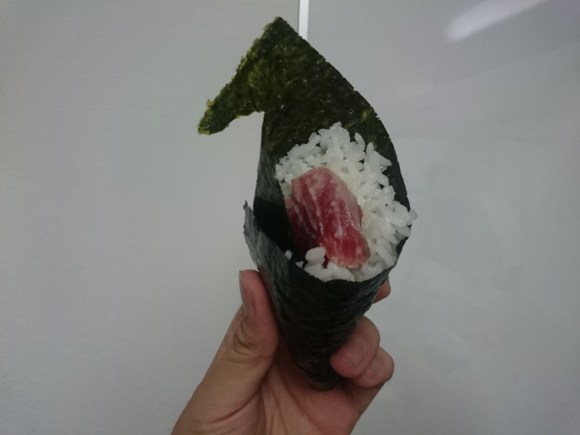
 Rare ghost-white tuna caught off Bali — we go to see it on display in Shibuya!
Rare ghost-white tuna caught off Bali — we go to see it on display in Shibuya! Kewpie Mayo Cafe celebrates Mayonnaise Day with a month of mayo-hem, special menu
Kewpie Mayo Cafe celebrates Mayonnaise Day with a month of mayo-hem, special menu These beautiful pieces of sushi aren’t actually sushi
These beautiful pieces of sushi aren’t actually sushi We visit super popular tuna specialty joint Izakaya Hitoshi on Okinawa’s Ishigaki Island
We visit super popular tuna specialty joint Izakaya Hitoshi on Okinawa’s Ishigaki Island How to choose a great block of sashimi-grade tuna – 66-year maguro master shares his protips
How to choose a great block of sashimi-grade tuna – 66-year maguro master shares his protips Disney princesses get official manga makeovers for Manga Princess Cafe opening in Tokyo
Disney princesses get official manga makeovers for Manga Princess Cafe opening in Tokyo Beautiful new Final Fantasy T-shirt collection on the way from Uniqlo【Photos】
Beautiful new Final Fantasy T-shirt collection on the way from Uniqlo【Photos】 Randomly running into a great sushi lunch like this is one of the best things about eating in Tokyo
Randomly running into a great sushi lunch like this is one of the best things about eating in Tokyo Our reporter takes her 71-year-old mother to a visual kei concert for the first time
Our reporter takes her 71-year-old mother to a visual kei concert for the first time Hey, Japanese taxi driver! Take us to your favorite restaurant in Tsuruga City!
Hey, Japanese taxi driver! Take us to your favorite restaurant in Tsuruga City! What happens to Cup Noodle Mystery Meat when you cook it in a rice cooker?
What happens to Cup Noodle Mystery Meat when you cook it in a rice cooker? Is the new Shinkansen Train Desk ticket worth it?
Is the new Shinkansen Train Desk ticket worth it?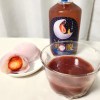 We tried Japan’s Strawberry Daifuku? liqueur, one of three dessert-themed liqueurs
We tried Japan’s Strawberry Daifuku? liqueur, one of three dessert-themed liqueurs 89-year-old Japanese man rides bike 600 kilometers to visit his 61-year-old son
89-year-old Japanese man rides bike 600 kilometers to visit his 61-year-old son New Pokémon cakes let you eat your way through Pikachu and all the Eevee evolutions
New Pokémon cakes let you eat your way through Pikachu and all the Eevee evolutions We try out “Chan Ramen”, an underground type of ramen popular in the ramen community
We try out “Chan Ramen”, an underground type of ramen popular in the ramen community New Studio Ghibli bedding sets are cool in all senses of the word
New Studio Ghibli bedding sets are cool in all senses of the word Our Japanese reporter visits Costco in the U.S., finds super American and very Japanese things
Our Japanese reporter visits Costco in the U.S., finds super American and very Japanese things Foreign English teachers in Japan pick their favorite Japanese-language phrases【Survey】
Foreign English teachers in Japan pick their favorite Japanese-language phrases【Survey】 There’s a park inside Japan where you can also see Japan inside the park
There’s a park inside Japan where you can also see Japan inside the park Japanese convenience store packs a whole bento into an onigiri rice ball
Japanese convenience store packs a whole bento into an onigiri rice ball Hanton rice — a delicious regional food even most Japanese people don’t know about, but more should
Hanton rice — a delicious regional food even most Japanese people don’t know about, but more should Final Fantasy, Kingdom Hearts, and Dragon Quest pet product line announced by Square Enix
Final Fantasy, Kingdom Hearts, and Dragon Quest pet product line announced by Square Enix Studio Ghibli releases Kiki’s Delivery Service chocolate cake pouches in Japan
Studio Ghibli releases Kiki’s Delivery Service chocolate cake pouches in Japan Japan’s bone-breaking and record-breaking roller coaster is permanently shutting down
Japan’s bone-breaking and record-breaking roller coaster is permanently shutting down New definition of “Japanese whiskey” goes into effect to prevent fakes from fooling overseas buyers
New definition of “Japanese whiskey” goes into effect to prevent fakes from fooling overseas buyers Foreign passenger shoves conductor on one of the last full runs for Japan’s Thunderbird train
Foreign passenger shoves conductor on one of the last full runs for Japan’s Thunderbird train Kyoto bans tourists from geisha alleys in Gion, with fines for those who don’t follow rules
Kyoto bans tourists from geisha alleys in Gion, with fines for those who don’t follow rules Studio Ghibli unveils Mother’s Day gift set that captures the love in My Neighbour Totoro
Studio Ghibli unveils Mother’s Day gift set that captures the love in My Neighbour Totoro Domino’s Japan now sells…pizza ears?
Domino’s Japan now sells…pizza ears? Toyota built a life-sized Miraidon Pokémon and are letting people test drive it this weekend
Toyota built a life-sized Miraidon Pokémon and are letting people test drive it this weekend New Japanese KitKat flavour stars Sanrio characters, including Hello Kitty
New Japanese KitKat flavour stars Sanrio characters, including Hello Kitty Sales of Japan’s most convenient train ticket/shopping payment cards suspended indefinitely
Sales of Japan’s most convenient train ticket/shopping payment cards suspended indefinitely Sold-out Studio Ghibli desktop humidifiers are back so Totoro can help you through the dry season
Sold-out Studio Ghibli desktop humidifiers are back so Totoro can help you through the dry season Japanese government to make first change to romanization spelling rules since the 1950s
Japanese government to make first change to romanization spelling rules since the 1950s Ghibli founders Toshio Suzuki and Hayao Miyazaki contribute to Japanese whisky Totoro label design
Ghibli founders Toshio Suzuki and Hayao Miyazaki contribute to Japanese whisky Totoro label design Doraemon found buried at sea as scene from 1993 anime becomes real life【Photos】
Doraemon found buried at sea as scene from 1993 anime becomes real life【Photos】 Tokyo’s most famous Starbucks is closed
Tokyo’s most famous Starbucks is closed One Piece characters’ nationalities revealed, but fans have mixed opinions
One Piece characters’ nationalities revealed, but fans have mixed opinions We asked a Uniqlo employee what four things we should buy and their suggestions didn’t disappoint
We asked a Uniqlo employee what four things we should buy and their suggestions didn’t disappoint Princesses, fruits, and blacksmiths: Study reveals the 30 most unusual family names in Japan
Princesses, fruits, and blacksmiths: Study reveals the 30 most unusual family names in Japan Studio Ghibli’s new desktop Howl’s Moving Castle will take your stationery on an adventure
Studio Ghibli’s new desktop Howl’s Moving Castle will take your stationery on an adventure Sliced mayonnaise and white chocolate now exist in Japan, bringing sandwiches to glorious new era
Sliced mayonnaise and white chocolate now exist in Japan, bringing sandwiches to glorious new era We prepared our own delicious amberjack sashimi and realized how much money it saved us【Pics】
We prepared our own delicious amberjack sashimi and realized how much money it saved us【Pics】 What’s the best type of sushi to end a meal on? Japanese survey picks the pieces
What’s the best type of sushi to end a meal on? Japanese survey picks the pieces Leading toy maker in Japan releases DIY mayo-making machines
Leading toy maker in Japan releases DIY mayo-making machines Japan’s biggest ham company is making “tuna” that contains neither ham nor fish
Japan’s biggest ham company is making “tuna” that contains neither ham nor fish New sashimi clips from Japan let you wear your love for sushi in your hair
New sashimi clips from Japan let you wear your love for sushi in your hair Yaizu: Japan’s best sushi market destination even most foodies in Japan have never heard of
Yaizu: Japan’s best sushi market destination even most foodies in Japan have never heard of Family Mart to celebrate 40th birthday by introducing onigiri with eco-friendly packaging
Family Mart to celebrate 40th birthday by introducing onigiri with eco-friendly packaging Japanese people list their top ten fish, and tuna isn’t number one
Japanese people list their top ten fish, and tuna isn’t number one Neco Meshi: The line of Japanese snacks that both you and your cat can eat! 【Taste test】
Neco Meshi: The line of Japanese snacks that both you and your cat can eat! 【Taste test】 Smooth Mayonnaise Pudding served up in honor of Kewpie’s 100th anniversary
Smooth Mayonnaise Pudding served up in honor of Kewpie’s 100th anniversary Hungry and on the go? Top 10 ranking of ekiben at Tokyo’s Shinagawa Station
Hungry and on the go? Top 10 ranking of ekiben at Tokyo’s Shinagawa Station Beef and sashimi in the same rice bowl: Brilliance or blasphemy? We find out【Taste test】
Beef and sashimi in the same rice bowl: Brilliance or blasphemy? We find out【Taste test】 Salmon sashimi noodles: Terrifying, mouthwatering, or both?【Photos】
Salmon sashimi noodles: Terrifying, mouthwatering, or both?【Photos】 Mayo: Just as good for shiny, healthy hair as it is for sandwiches, say Japanese beauty tips
Mayo: Just as good for shiny, healthy hair as it is for sandwiches, say Japanese beauty tips RocketKitchen: A simple and delicious recipe for cooking tuna
RocketKitchen: A simple and delicious recipe for cooking tuna Super-cheap yakiniku restaurant sells meat by the mouthful to give you exactly what you want
Super-cheap yakiniku restaurant sells meat by the mouthful to give you exactly what you want
Leave a Reply